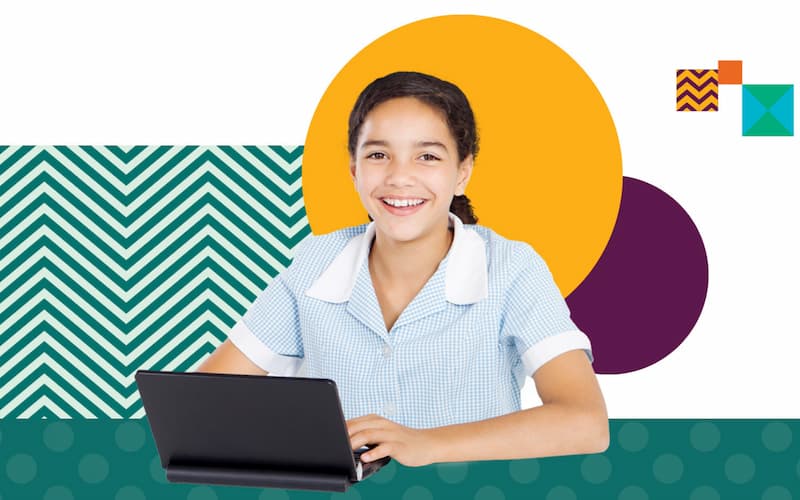5 things to love about Reach Assessments

The adage that ‘knowledge is power’ applies in all manner of educational contexts. It is, however, certainly true when it comes to building a picture of how your teaching is landing with your students.
Routine and compulsory tests and assessments indeed give schools and teachers a measure of this – but they have their drawbacks. For instance, sometimes by the time students sit a compulsory test and receive a permanent recorded result, it’s too late to address any learning gaps.
That’s why an external, low-stakes benchmarking tool such as Reach Assessments can support teachers in helping your whole spectrum of students to reach beyond their potential – from lower-performing students, to the higher-performing, and everyone in between.
Here are five reasons for schools and teachers to love Reach.
1. It’s independent and objective
While you’re likely to be creating your own quizzes and tests throughout the year to check that your students have grasped certain concepts and skills, there’s great benefit in bolstering this with an external measure of their progress.
A progression test such as Reach, which can blend seamlessly with your school’s existing assessment schedule, offers additional elements to the total picture that you’re building up about your primary students and secondary students – a yardstick that’s independent of government measures, and separate from your own practice.
It helps you ensure that your own tests are of the right difficulty, confirm any beliefs you have about your students’ progress and – crucially – can highlight learning gaps that you may not have spotted from other assessments. Reach covers subjects including Maths, English, Science, Digital Technologies, Writing, Spelling and Grammar and Punctuation.
Reach authors purposely build misconceptions into the test questions for the mistakes that we anticipate students will make, to allow you to see that, for example, all students in a particular class make the same kinds of mistake in the same kinds of question. This means that the results from this benchmarking assessment give you trends in student-understanding that help you decide the next step in their learning.
Independent tests are also less likely to lead to cramming, and the questions instead encourage thought, observation and scrutiny from your students.
2. Its practical data supports your teaching
As a teacher, it’s highly likely that you’re already brimming with data, and hardly wish to be bombarded with more. Reach is designed with this in mind and delivers results to you in a format that makes data clear to understand so that you can translate it to have real impact in the classroom.
The interactive online report gives you the option of a simple high-level overview, but also the ability to click through, filter and drilldown into more granular levels of data, individual questions, students and responses.
Descriptive feedback highlights students’ gaps in understanding rather than simply listing what they got wrong.
The report filters allow you to organise the data in different ways to find patterns. For example, you can group the questions in relation to similar skills or knowledge. This allows you to find patterns about misconceptions that groups of students might have. For example, if a considerable number of students responded to a question with the same incorrect answer, it may indicate a common misconception within the class. You can then use this to plan teaching activities to address the misconception.
Most recently, Reach has introduced performance bands into its reports – describing how well students did in light of the difficulty level of the questions. These bands, which incorporate set difficulty parameters, make it easier to see the distribution of abilities and results across your cohort by allowing you to see how many students are in each band.
This is valuable because although your cohort’s overall average result might be good, this figure may in fact reflect a broad mix of lower-scoring students and high-scoring students – rather than indicating that most of your students fall into the good-performance zone.
3. Its test questions are the best quality on the market
Reach is a progression assessment written by the same specialist author team who create the renowned ICAS competition. A majority of them are themselves former teachers with decades of on-the-ground experience, as well as academics specialising in assessment techniques.
The authoring team invested a total of 12 months selecting items to construct the Reach test. Each question undergoes the scrutiny of a six-phase review process. This considers aspects such as whether the language and cognitive load of the question is appropriate for the age and reading level of the student and whether it’s presented in a real-world, universal context that the student is able to instantly recognise. The authors also check for any cultural, emotional or political sensitivities.
Another phase of the process ensures that each question tests the intended capability as effectively as possible. This level of quality control and rigour doesn’t happen in other testing bodies to this extent. It means that the questions in Reach are regarded as the best quality of their kind on the market.
While the questions measure the same skills and capabilities as those covered in your syllabus, the Reach authors approach them in novel ways. They also take a basic skill to a higher level of thinking. Rather than testing rote learning, they push your students to consider how they can combine and apply what they’ve learned in class in order to answer the question.
4. It benefits students of all ability levels
There are very few tests available which measure, demonstrate and stretch the abilities of every student in a cohort, no matter how weak or strong.
Reach is unique in that its questions will still challenge very bright students, who will have to think about what’s being asked.
At the same time, we purposely construct the tests so that even lower-performing students will encounter questions that still allow them to demonstrate their competencies in skills that other tests don’t reveal.
You want your students to attempt test questions believing that the answer is within their grasp. Even if they ultimately get the question wrong, they’ve engaged with it and aren’t discouraged as with some other tests. In this sense, Reach stretches students of all ability levels, teasing out skills and thought processes that aren’t always pinpointed by other modes of testing, and may not necessarily emerge in a classroom environment.
5. It’s easy and efficient to run
Reach is delivered to your school via a globally-recognised online assessment platform, created by education technology experts who have built in features specifically to streamline the end-to-end testing process for time-poor teachers.
The Reach online portal lets you enrol students, deliver and monitor the test, and upload responses with the click of a mouse, and the interface is intuitive, requiring a level of computer skills to operate similar to that needed for most popular desktop software programs. Additionally, the technical requirements are within the reach of most schools.
The online format makes logistics easier in that there are no paper scripts to collate, distribute or transport, and allows you to choose a testing date that’s convenient for you and your school, rather than having to adhere to one universal set date.
Enable your students of all abilities to reach beyond their potential. Buy Reach >



